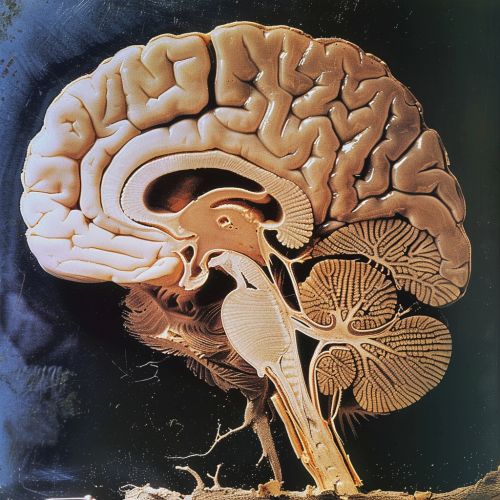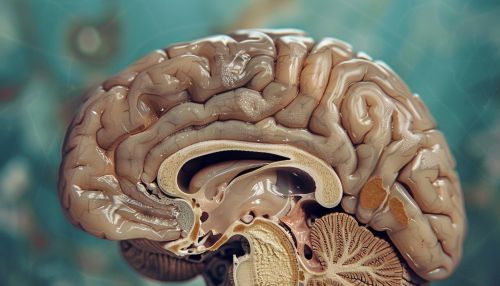Corticospinal tract
Anatomy
The corticospinal tract (CST) is a part of the central nervous system (CNS) that plays a vital role in controlling the movements of the body. It is one of the major neural pathways between the cerebral cortex and the spinal cord. The corticospinal tract is composed of two separate tracts: the lateral corticospinal tract and the anterior corticospinal tract.


Structure
The corticospinal tract originates from the cerebral cortex, specifically the precentral gyrus, which is the primary motor area of the brain. The tract descends through the posterior limb of the internal capsule, the crus cerebri of the midbrain, the pons, and the medulla oblongata. In the lower medulla, about 90% of the corticospinal fibers decussate (cross over) and descend in the lateral corticospinal tract of the spinal cord. The remaining 10% descend ipsilaterally in the anterior corticospinal tract.
Function
The primary function of the corticospinal tract is to carry motor information from the cerebral cortex to the spinal cord. The lateral corticospinal tract controls movements of the limbs and digits, while the anterior corticospinal tract controls movements of the axial muscles. These tracts are responsible for voluntary, skilled, and precise movements, especially fine movements of the hands and fingers.
Clinical significance
Damage to the corticospinal tract can result in a loss of motor function, a condition known as corticospinal tract syndrome. Symptoms can include muscle weakness, increased muscle tone (spasticity), increased deep tendon reflexes, and a positive Babinski sign. The severity and location of the symptoms depend on the location and extent of the damage. For example, damage to the lateral corticospinal tract results in symptoms on the opposite side of the body, while damage to the anterior corticospinal tract results in symptoms on the same side of the body.
